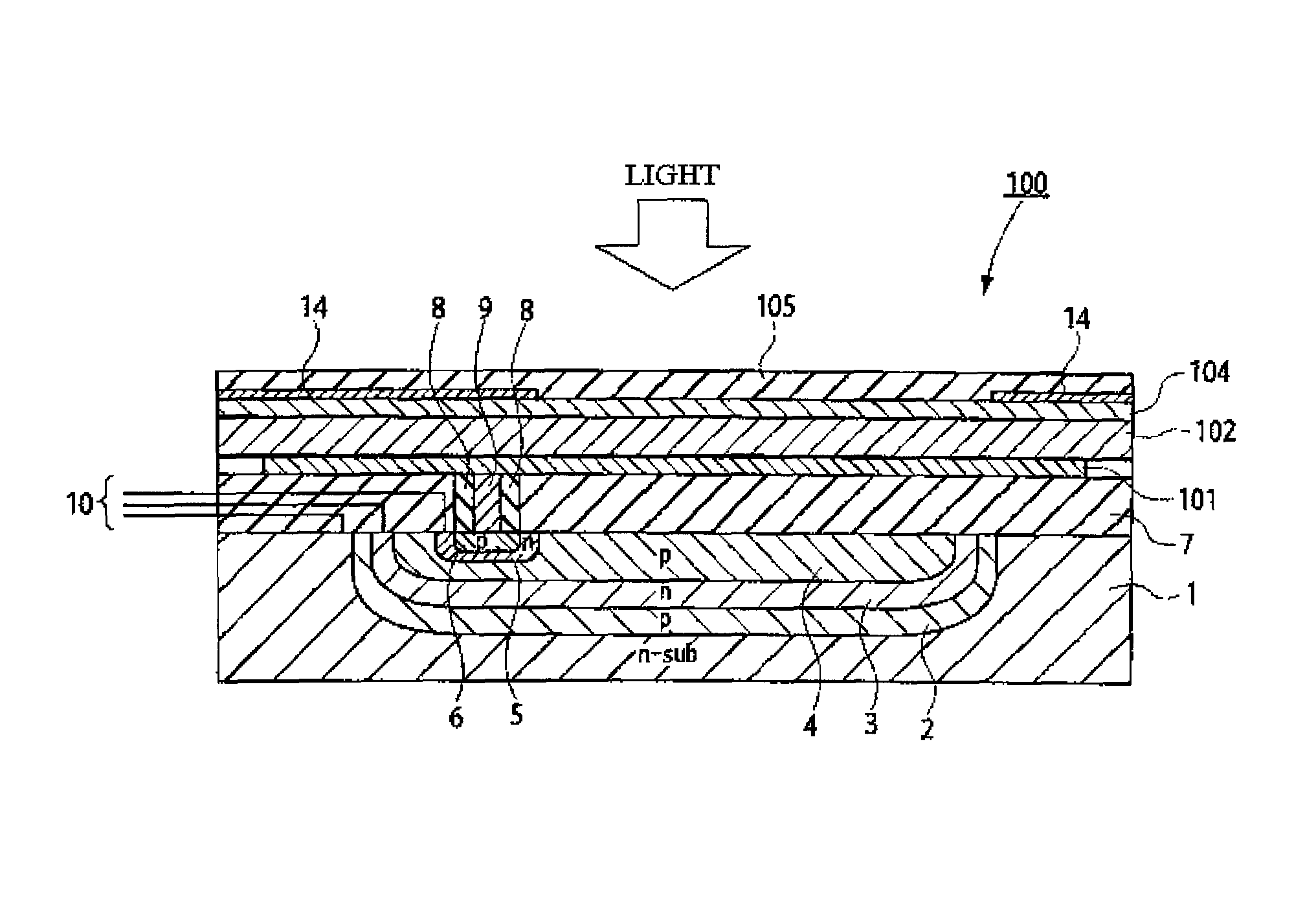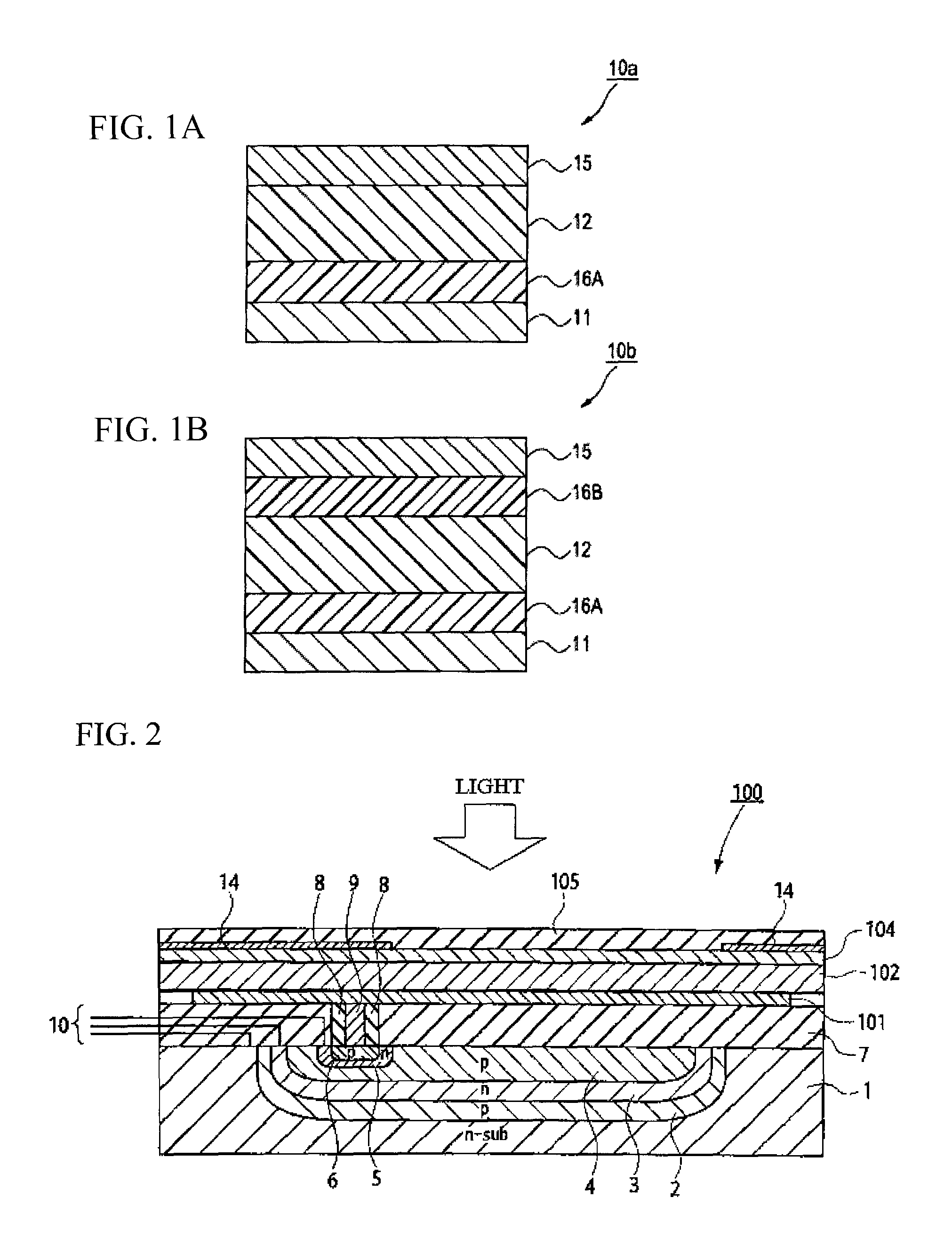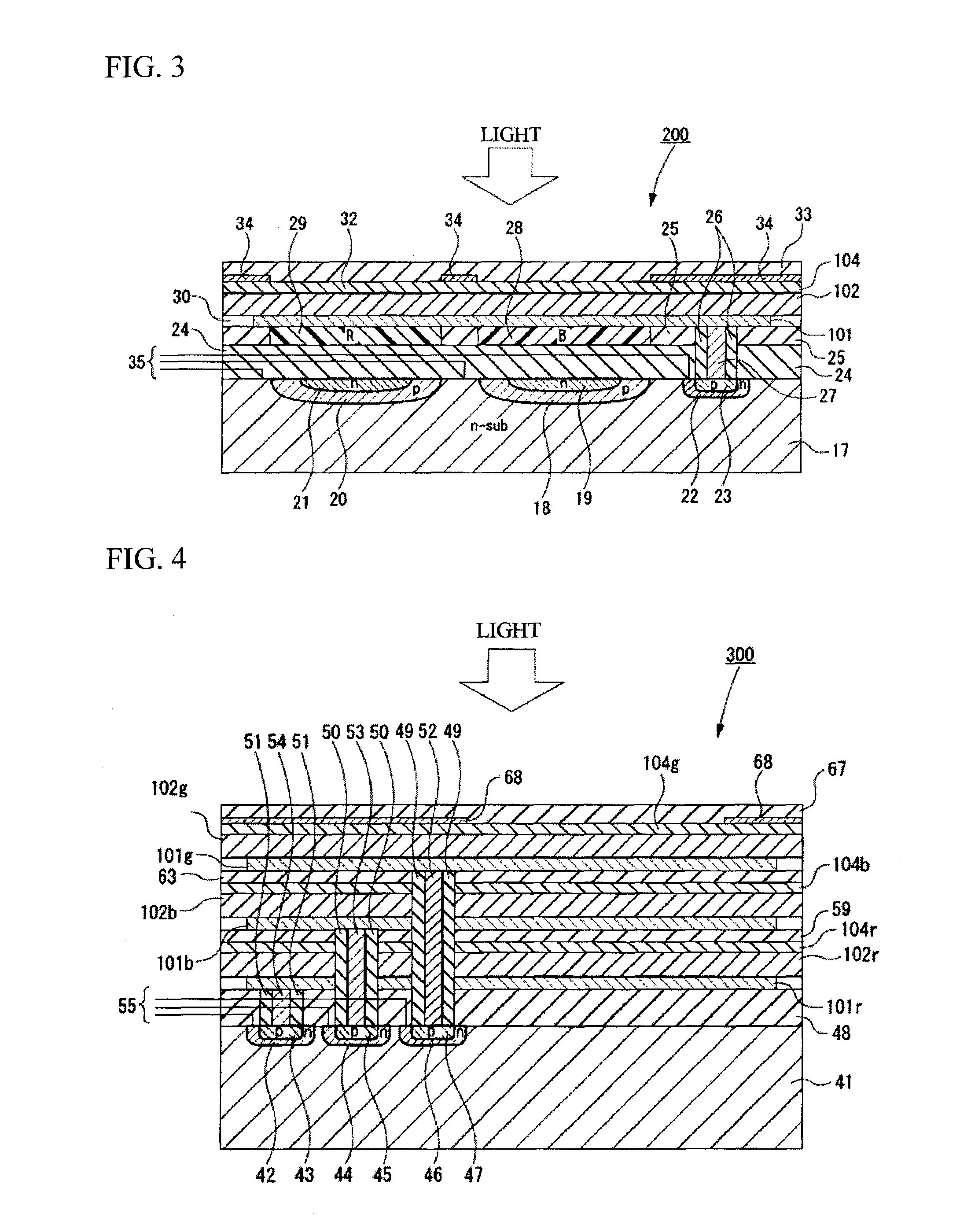Photoelectric conversion element, production method thereof, photosensor, imaging device and their driving method
a technology of photoelectric conversion and production method, which is applied in the direction of sustainable manufacturing/processing, instruments, and radiation control devices, can solve the problems of reducing the aperture ratio, reducing the light collection efficiency and the resulting reduction in sensitivity, and disadvantageously increasing the dark current, so as to reduce the range of increase in the dark current and low dark current
- Summary
- Abstract
- Description
- Claims
- Application Information
AI Technical Summary
Benefits of technology
Problems solved by technology
Method used
Image
Examples
example 1
[0367]A device in the embodiment shown in FIG. 1A was fabricated. That is, amorphous ITO was deposited on a glass substrate by sputtering to a thickness of 30 nm, thereby forming a lower electrode, and Compound (A-1) was deposited thereon by vacuum heating deposition to a thickness of 100 nm to form an electron blocking layer. Thereafter, a layer formed by co-depositing Compound (1) and fullerene (C60) to a thickness of 100 nm and 300 nm, respectively, in terms of a single layer was deposited thereon by vacuum heating deposition in a state of the substrate temperature being controlled to 25° C. to form a photoelectric conversion layer. Here, the vacuum deposition of the photoelectric conversion layer was performed at a vacuum degree of 4×10−4 Pa or less.
[0368]Furthermore, amorphous ITO was deposited thereon as an upper electrode by sputtering to a thickness of 10 nm to form a transparent electrically conductive film. In this way, a solid-state imaging device having a photoelectric c...
example 2
[0371]A solid-state imaging device having a photoelectric conversion element was fabricated in the same manner as in Example 2 except that the film thickness of Compound (I) was changed to 30 nm.
PUM
 Login to View More
Login to View More Abstract
Description
Claims
Application Information
 Login to View More
Login to View More - R&D
- Intellectual Property
- Life Sciences
- Materials
- Tech Scout
- Unparalleled Data Quality
- Higher Quality Content
- 60% Fewer Hallucinations
Browse by: Latest US Patents, China's latest patents, Technical Efficacy Thesaurus, Application Domain, Technology Topic, Popular Technical Reports.
© 2025 PatSnap. All rights reserved.Legal|Privacy policy|Modern Slavery Act Transparency Statement|Sitemap|About US| Contact US: help@patsnap.com



